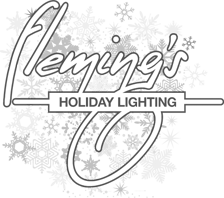HOW THE CHRISTMAS LIGHT TRADITION GOT STARTED
/Researchers say that the custom of displaying Christmas lights began in medieval times in Germany. During their "Yule" celebration of the winter solstice, people burned a "Yule Log" to light the darkest days of winter, and ward off evil spirits. This practice was adapted by many churches as part of their annual winter celebrations; but the Christian churches believed the light from the Yule Log represented Jesus, as the light of the world. Eventually, the custom of log lighting was replaced by candle lighting, and by the end of the 18th Century the tradition of lighting candles for Christmas spread throughout Eastern Europe.
The lighted Christmas tree, thought by some to be the precursor of modern Christmas lighting, was first seen in the 17th Century (some credit the German theologian, Martin Luther, founder of the first Protestant church, with starting the practice). It became an important part of a European Christmas, and was especially popular among European royalty. On Christmas Eve in 1832, Queen Victoria, then a 13-year-old princess, wrote in her diary: "After dinner...we then went into the drawing-room...There were two large round tables on which were placed two trees hung with lights and sugar ornaments."
In 19th Century America, people used pins, glue and melted wax to affix candles to Christmas tree branches inside their homes. Aware of the danger, many lit the candles for only a short time each night, with containers of water nearby; however, many homes burned to the ground. In 1908, insurance companies declared they would no longer pay for Christmas tree fire damage.
Not surprisingly, the evolution of Christmas lighting parallels the evolution of the light bulb. In 1880, to publicize his invention of the incandescent light bulb, Thomas Edison tied incandescent bulbs on strings and hung them all around his Menlo Park compound during Christmas. This delighted passing commuters on the nearby railway who were awed by the "Christmas miracle." Then, for Christmas in 1882, Edison had his associate, Edward Johnson, display the first electrically illuminated Christmas tree at his home in New York.
By 1900, department stores began using the new lights for their Christmas displays. After General Electric bought the patent rights to Edison's bulbs, the first ad for Christmas tree lights appeared in the magazine, Scientific America, in 1925. They were so expensive – $12 a string (about $300 today) – that the ad suggested people rent the lights for their holiday display.
In 1912, a group of wealthy New Yorkers sponsored a public Christmas celebration with a huge lighted Christmas tree. Their goal was to revive a sense of community they felt had been lost during the fast-paced industrial revolution. The event drew a large crowd from a variety of religions, races, and ethnicities, who celebrated the joyful experience together. This event gave birth to a national trend of community-sponsored public Christmas lighting displays on buildings, streets, landscaping, landmarks, parks and town squares across the country.
Historians say that people tend to look for traditions and symbols of hope in times of uncertainty. In the mid-20th Century, post-Depression, post-War era, Americans embraced the inspirational symbolism that Christmas light displays offered. At the 1957 National Christmas tree lighting ceremony, President Eisenhower explained the new tradition: "The custom we now observe brings us together for a few minutes on this one night - you and I are not alone in a world indifferent and cold. We are part of a numerous company, united in the brotherhood of Christmas."
The evolution of Christmas lights continues – from the iconic Bubble Light of the 1940's to lights that twinkle, flicker, and blink to the beat of music; in recent decades we've replaced our old tungsten lights with more energy-efficient LED lights.
The early Christmas candles, glowing in churches and on fireplace mantels, uplifted those who were fortunate enough to gaze at them. Today's technology has given us the ability to create huge, computer-controlled, holiday lighting displays, both at home and in public spaces, making it possible for millions of people of every persuasion to be uplifted and comforted by the Spirit of Christmas.


